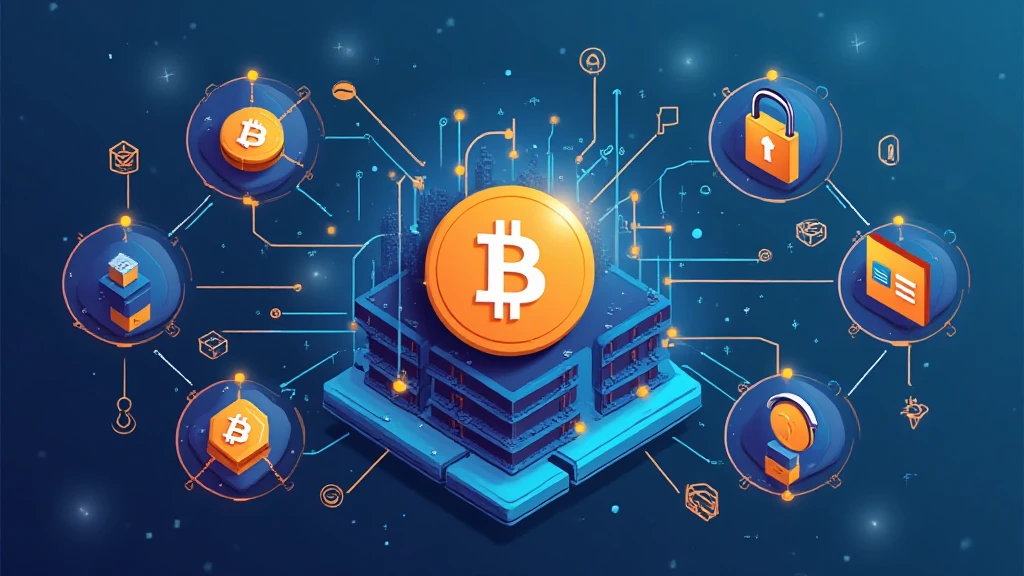Introduction
As of 2024, over $4.1 billion has been reported lost due to hacks across decentralized finance (DeFi) platforms. This alarming statistic raises critical questions about the safety and security of digital assets. With a fast-growing user base in Vietnam alone, which has seen exponential growth in cryptocurrency adoption, the demand for effective Bitcoin DeFi insurance protocols continues to surge. This article delves into the intricate world of DeFi insurance, exploring how these protocols can safeguard your investments against unforeseen events in the blockchain realm.
Understanding DeFi Insurance
DeFi insurance protocols function similarly to traditional insurance by providing coverage against risks faced by decentralized applications (dApps) and users. Just as a bank ensures clients’ deposits, these protocols act as a safety net, ready to compensate users in case of smart contract failures, hacks, or system vulnerabilities. In Vietnam, the rising interest in cryptocurrencies has brought attention to these protocols, reflecting the global shift towards enhanced asset security.
The Need for Bitcoin DeFi Insurance Protocols
- Protection Against Hacks: With the increasing sophistication of cyberattacks, users require reliable measures to protect their assets.
- Smart Contract Failures: Errors in smart contracts can lead to significant financial losses when deploying decentralized applications.
- User Growth: From January to March 2025, Vietnam witnessed a 150% increase in cryptocurrency adoption, underlining the urgency for robust insurance mechanisms.
How Do DeFi Insurance Protocols Work?
DeFi insurance protocols typically operate on the principles of risk pooling and a decentralized model, leveraging the power of blockchain technology. Users pay a premium in cryptocurrency and, in return, they receive coverage against specific risks, which could include hacks or failures within the DeFi space. Let’s break it down further:

1. Premiums and Payouts
Much like conventional insurance, users must pay a premium, which funds the risk pool. In case a covered event occurs, affected users are compensated from this collective fund. Protocols such as Nexus Mutual exemplify this model, offering users a way to mitigate their risks while participating in the vibrant DeFi ecosystem.
2. Risk Assessment
To ensure sustainability, DeFi insurance protocols conduct thorough risk assessments. They evaluate the security measures in place for the dApps they cover to determine appropriate premiums. This adds a layer of security for users, ensuring they are not overpaying for inadequate coverage.
3. Claim Process
In the event of a hack or failure, users must submit a claim, which undergoes a verification process. The decentralized nature of these protocols means that claims can often be processed more efficiently than traditional insurance models, aligning with the ethos of the DeFi space.
Top Bitcoin DeFi Insurance Protocols to Consider
As the market evolves, several Bitcoin DeFi insurance protocols have emerged, each with unique features tailored to different user needs. Here are some of the notable platforms:
- Nexus Mutual: A member-owned insurance model that allows users to share risks within the community.
- Cover Protocol: Provides coverage in a transparent manner, allowing users to easily understand the risks being covered.
- InsurAce: Offers a wide range of coverage options tailored to various DeFi users, ensuring they can find suitable protection.
Decentralized vs. Centralized Insurance Solutions
As the DeFi space continues to expand, the debate between decentralized and centralized insurance solutions has gained traction. Let’s compare:
1. Decentralized Insurance
Decentralized solutions like Nexus Mutual enable users to participate in the governance and decision-making processes. They allow for community-driven risk assessment, translating to a tailored approach to insurance based on real user behaviors.
2. Centralized Insurance
Centralized insurance platforms may provide quicker claim payouts but often lack transparency and user engagement. These solutions might not fully cater to the unique risks associated with the DeFi landscape, leading to coverage gaps for users.
Future Trends in Bitcoin DeFi Insurance
The future of Bitcoin DeFi insurance protocols looks promising as innovation continues to drive the crypto market.
1. Integration of AI and Data Analytics
By incorporating advanced AI and analytics, DeFi insurance protocols can enhance risk assessment and claims processing capabilities. This technology will pave the way for more accurate premium pricing based on individual risk profiles.
2. Regulatory Adaptation
As authorities worldwide begin recognizing cryptocurrencies, we can expect clearer guidelines regarding DeFi insurance protocols. This legal backing will bolster user trust and facilitate wider adoption.
3. Increased Collaboration with Traditional Insurance
Collaboration between DeFi protocols and traditional financial institutions could create hybrid models, offering the benefits of both worlds. This could lead to more robust security solutions, especially for users in regions like Vietnam, where knowledge about crypto can lag behind adoption.
Conclusion
As the realm of Bitcoin DeFi insurance protocols continues to expand, users must stay informed and educated about the options available to them. In a world where the digital asset landscape is rife with risk, these protocols offer a compelling opportunity for financial protection. With Vietnam’s noteworthiness in crypto adoption, the growth and understanding of insurance protocols among users will be crucial. Engaging with these insurance innovations can significantly affect users’ experience and security in the ever-evolving crypto ecosystem. Remember, protecting your investments is as important as making them, and being proactive with Bitcoin DeFi insurance protocols can be the key to navigating future uncertainties.
Note: This article is for informational purposes only and does not constitute financial advice. Always consult with local regulators and professionals in the field.




